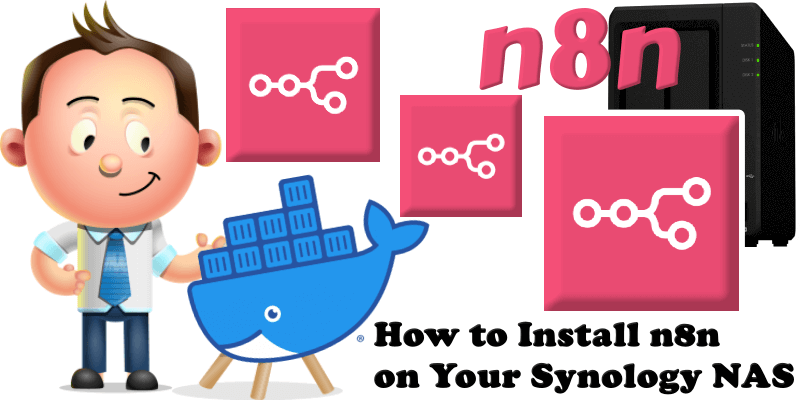
n8n (pronounced n-eight-n) helps you to interconnect every app with an API in the world with each other to share and manipulate its data without a single line of code. It is an easy to use, user-friendly and highly customizable service, which uses an intuitive user interface for you to design your unique workflows very fast. Hosted on your Synology NAS server and not based in the cloud, it keeps your sensible data very secure in your own trusted database. In this step by step guide I will show you how to install n8n on your Synology NAS using Docker & Portainer.
This guide works perfectly with the latest n8n 2.0.2 release.
STEP 1
Please Support My work by Making a Donation.
STEP 2
Install Portainer using my step by step guide. If you already have Portainer installed on your Synology NAS, skip this STEP. Attention: Make sure you have installed the latest Portainer version.
STEP 3
Make sure you have a synology.me Wildcard Certificate. Follow my guide to get a Wildcard Certificate. If you already have a synology.me Wildcard certificate, skip this STEP.
STEP 4
Go to Control Panel / Login Portal / Advanced Tab / click Reverse Proxy. Follow the instructions in the image below.
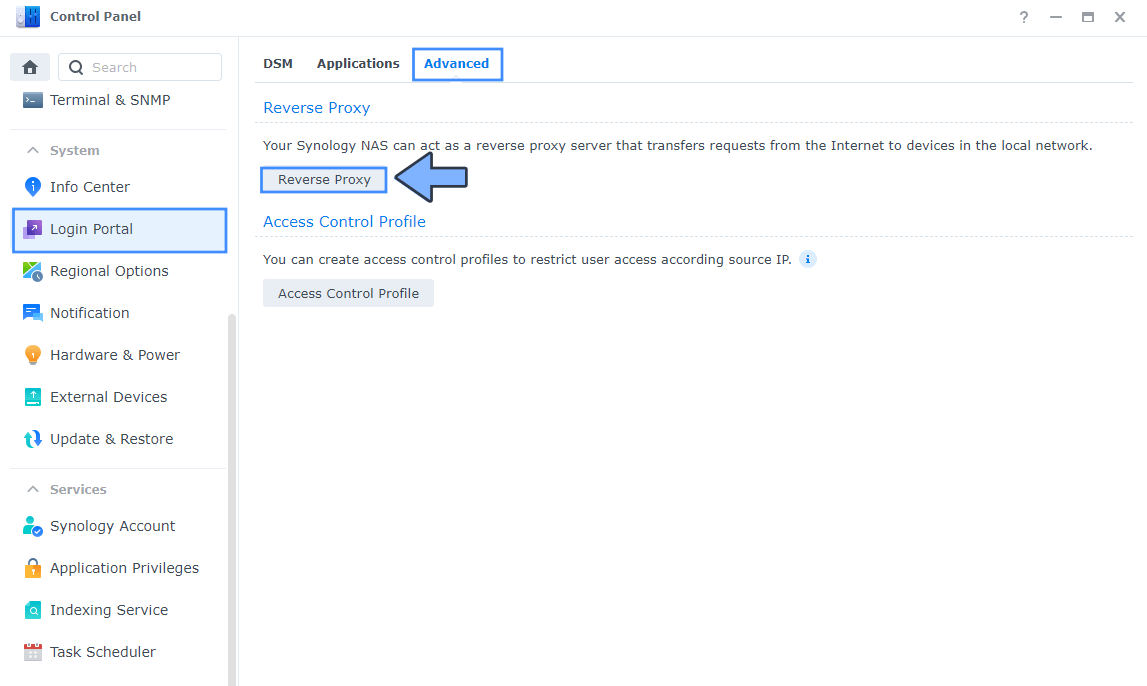
STEP 5
Now click the “Create” button. Follow the instructions in the image below.
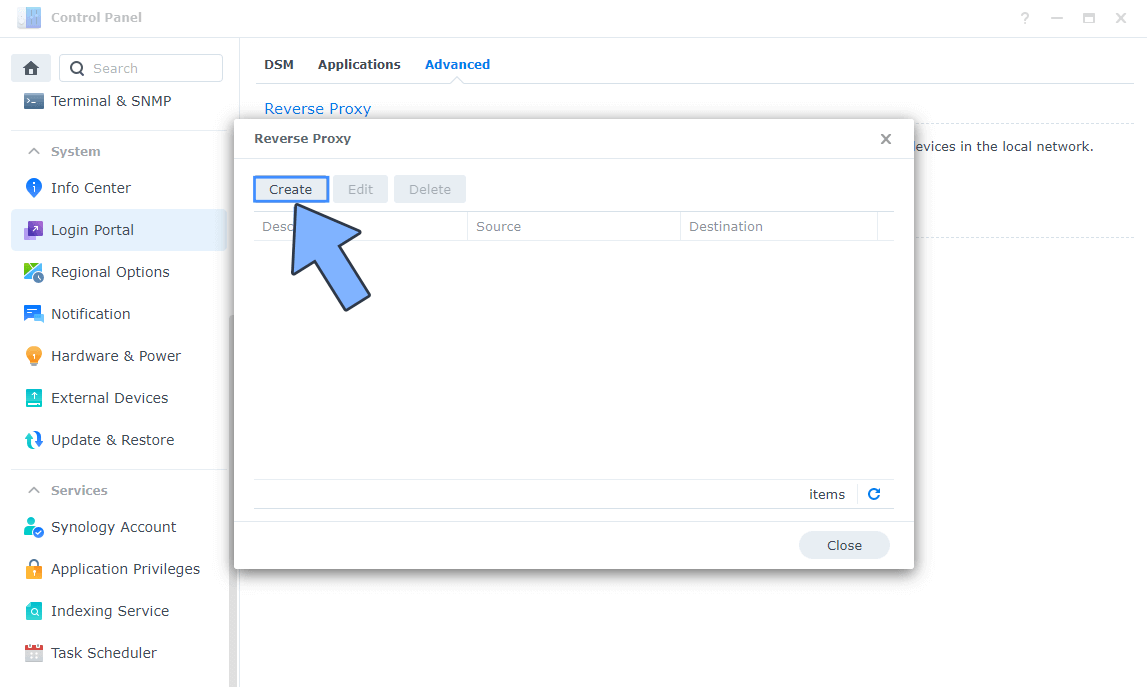
STEP 6
After you click the Create button, the window below will open. Follow the instructions in the image below.
On the General area, set the Reverse Proxy Name description: type in n8n. After that, add the following instructions:
Source:
Protocol: HTTPS
Hostname: n8n.yourname.synology.me
Port: 443
Check Enable HSTS
Destination:
Protocol: HTTP
Hostname: localhost
Port: 5678
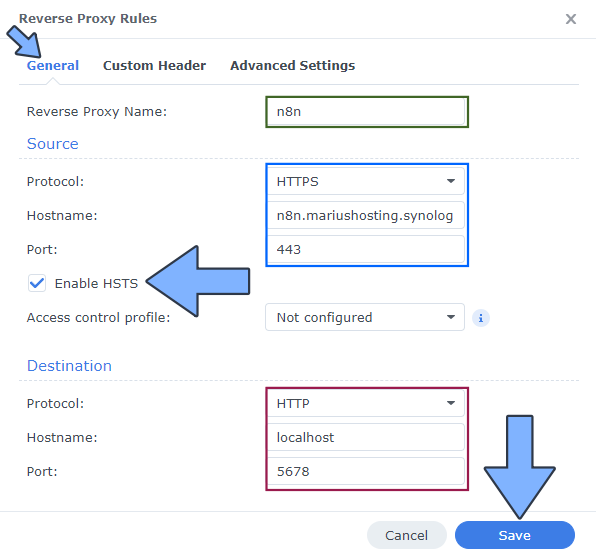
STEP 7
On the Reverse Proxy Rules click the Custom Header tab. Click Create and then, from the drop-down menu, click WebSocket. After you click on WebSocket, two Header Names and two Values will be automatically added. Click Save. Follow the instructions in the image below.

STEP 8
Go to Control Panel / Network / Connectivity tab/ Check Enable HTTP/2 then click Apply. Follow the instructions in the image below.
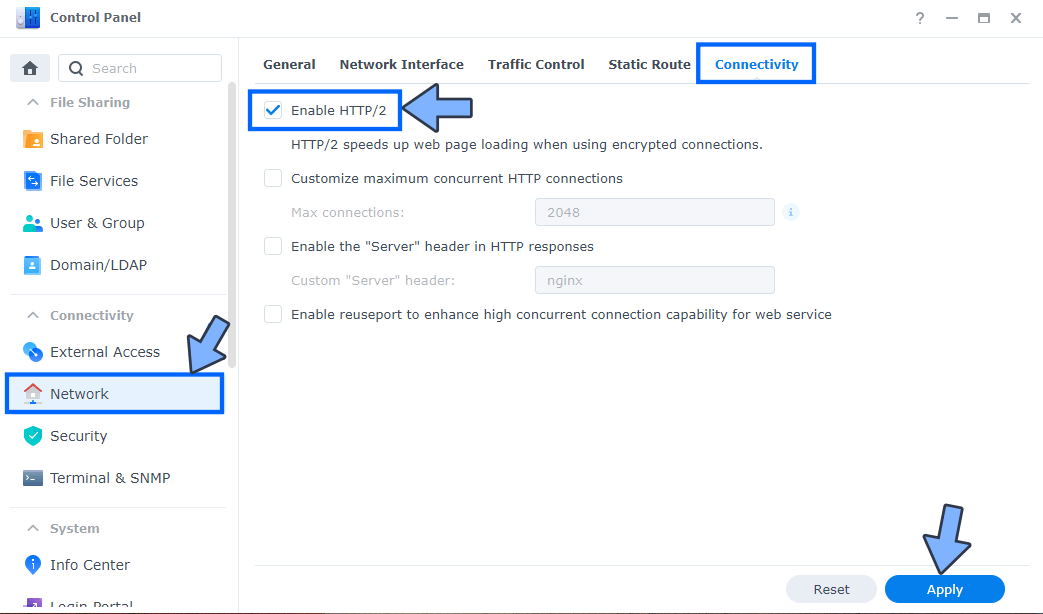
STEP 9
Go to Control Panel / Security / Advanced tab/ Check Enable HTTP Compression then click Apply. Follow the instructions in the image below.
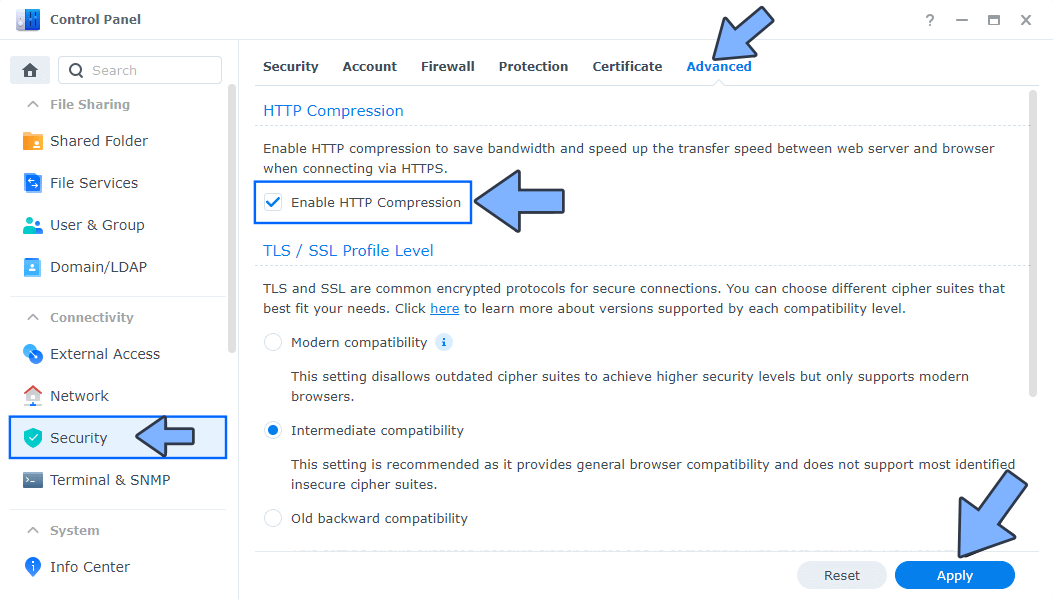
STEP 10
Go to File Station and open the docker folder. Inside the docker folder, create one new folder and name it n8n. Follow the instructions in the image below.
Note: Be careful to enter only lowercase, not uppercase letters.
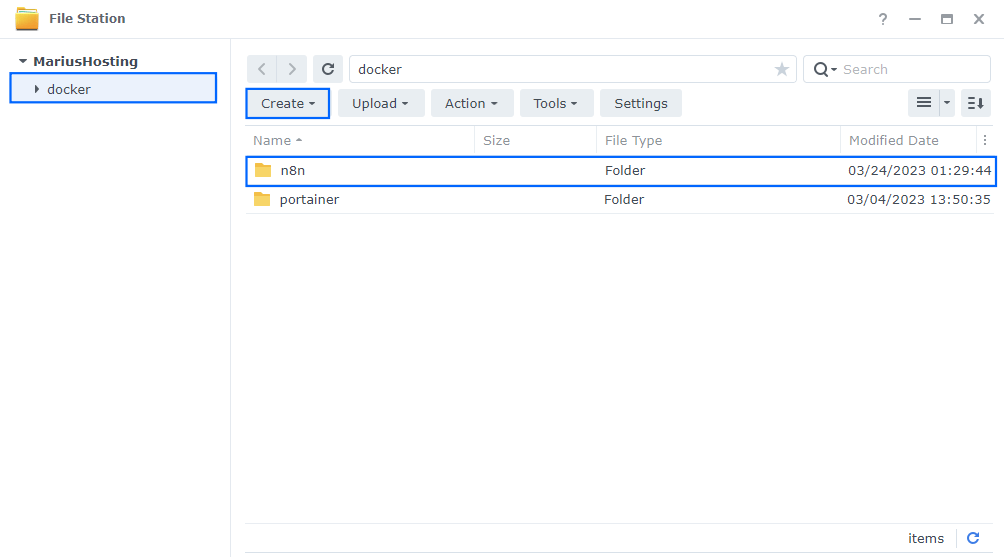
STEP 11
Now create three new folders inside the n8n folder that you created at STEP 10 and name them data, db, files. Follow the instructions in the image below.
Note: Be careful to enter only lowercase, not uppercase letters.
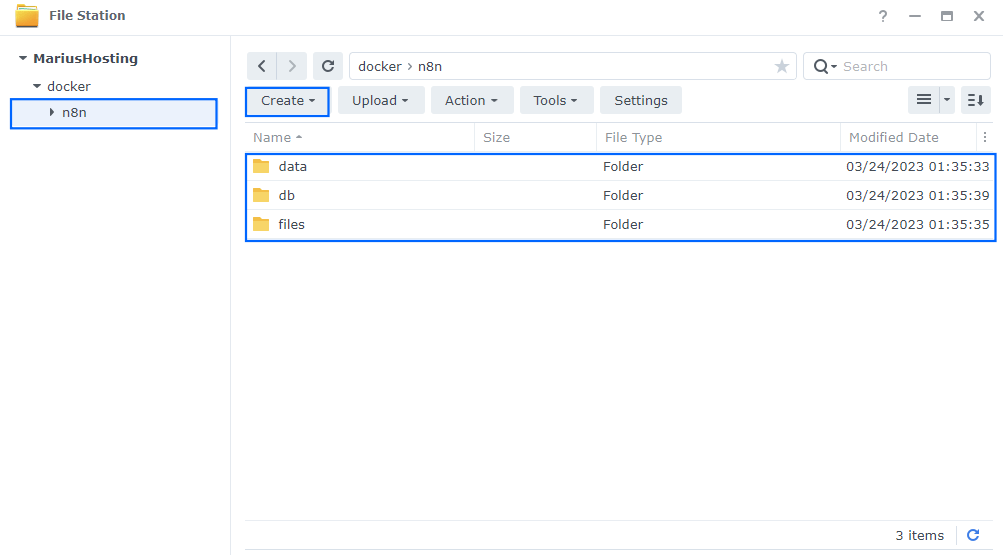
STEP 12
Log into Portainer using your username and password. On the left sidebar in Portainer, click on Home then Live connect. Follow the instructions in the image below.

On the left sidebar in Portainer, click on Stacks then + Add stack. Follow the instructions in the image below.

STEP 13
In the Name field type in n8n. Follow the instructions in the image below.
services:
db:
image: postgres:18
container_name: n8n-DB
hostname: n8n-db
security_opt:
- no-new-privileges:true
healthcheck:
test: ["CMD", "pg_isready", "-q", "-d", "n8n", "-U", "n8nuser"]
timeout: 45s
interval: 10s
retries: 10
volumes:
- /volume1/docker/n8n/db:/var/lib/postgresql:rw
environment:
TZ: Europe/Bucharest
POSTGRES_DB: n8n
POSTGRES_USER: n8nuser
POSTGRES_PASSWORD: n8npass
restart: on-failure:5
n8n:
image: n8nio/n8n:latest
container_name: n8n
healthcheck:
test: ["CMD-SHELL", "nc -z 127.0.0.1 5678 || exit 1"]
interval: 10s
timeout: 5s
retries: 3
start_period: 90s
hostname: n8n
user: 0:0
security_opt:
- no-new-privileges:true
ports:
- 5678:5678
volumes:
- /volume1/docker/n8n/data:/root/.n8n:rw
- /volume1/docker/n8n/files:/files:rw
environment:
N8N_HOST: n8n.yourname.synology.me
WEBHOOK_URL: https://n8n.yourname.synology.me
N8N_EDITOR_BASE_URL: https://n8n.yourname.synology.me
GENERIC_TIMEZONE: Europe/Bucharest
TZ: Europe/Bucharest
N8N_PORT: 5678
N8N_PROXY_HOPS: 4
N8N_ENCRYPTION_KEY: dOxZYTTZgXKMHkqLBIQVImayQXAVWdzGBPuFJKggzcgvgPJPXpWzqzKaUOIOGGIr
N8N_PROTOCOL: https
NODE_ENV: production
N8N_RUNNERS_ENABLED: true
N8N_ENFORCE_SETTINGS_FILE_PERMISSIONS: true
N8N_SECURE_COOKIE: true #or false if you want to use n8n without synology.me DDNS
DB_TYPE: postgresdb
DB_POSTGRESDB_DATABASE: n8n
DB_POSTGRESDB_HOST: n8n-db
DB_POSTGRESDB_PORT: 5432
DB_POSTGRESDB_USER: n8nuser
DB_POSTGRESDB_PASSWORD: n8npass
restart: on-failure:5
depends_on:
db:
condition: service_healthy
Note: Before you paste the code above in the Web editor area below, change the value for TZ and GENERIC_TIMEZONE. (Select your current Time Zone from this list.)
Note: Before you paste the code above in the Web editor area below, change the value for N8N_HOST and type in your own synology.me DDNS without https:// at the beginning that you have previously created at STEP 6.
Note: Before you paste the code above in the Web editor area below, change the value for WEBHOOK_URL and type in your own synology.me DDNS with https:// at the beginning that you have previously created at STEP 6.
Note: Before you paste the code above in the Web editor area below, change the value for N8N_EDITOR_BASE_URL and type in your own synology.me DDNS with https:// at the beginning that you have previously created at STEP 6.
Note: Before you paste the code above in the Web editor area below, change the value for N8N_ENCRYPTION_KEY. (Generate your own Random 64 length N8N_ENCRYPTION_KEY.)

STEP 14
Scroll down on the page until you see a button named Deploy the stack. Click on it. Follow the instructions in the image below. The installation process can take up to a few minutes. It will depend on your Internet speed connection.
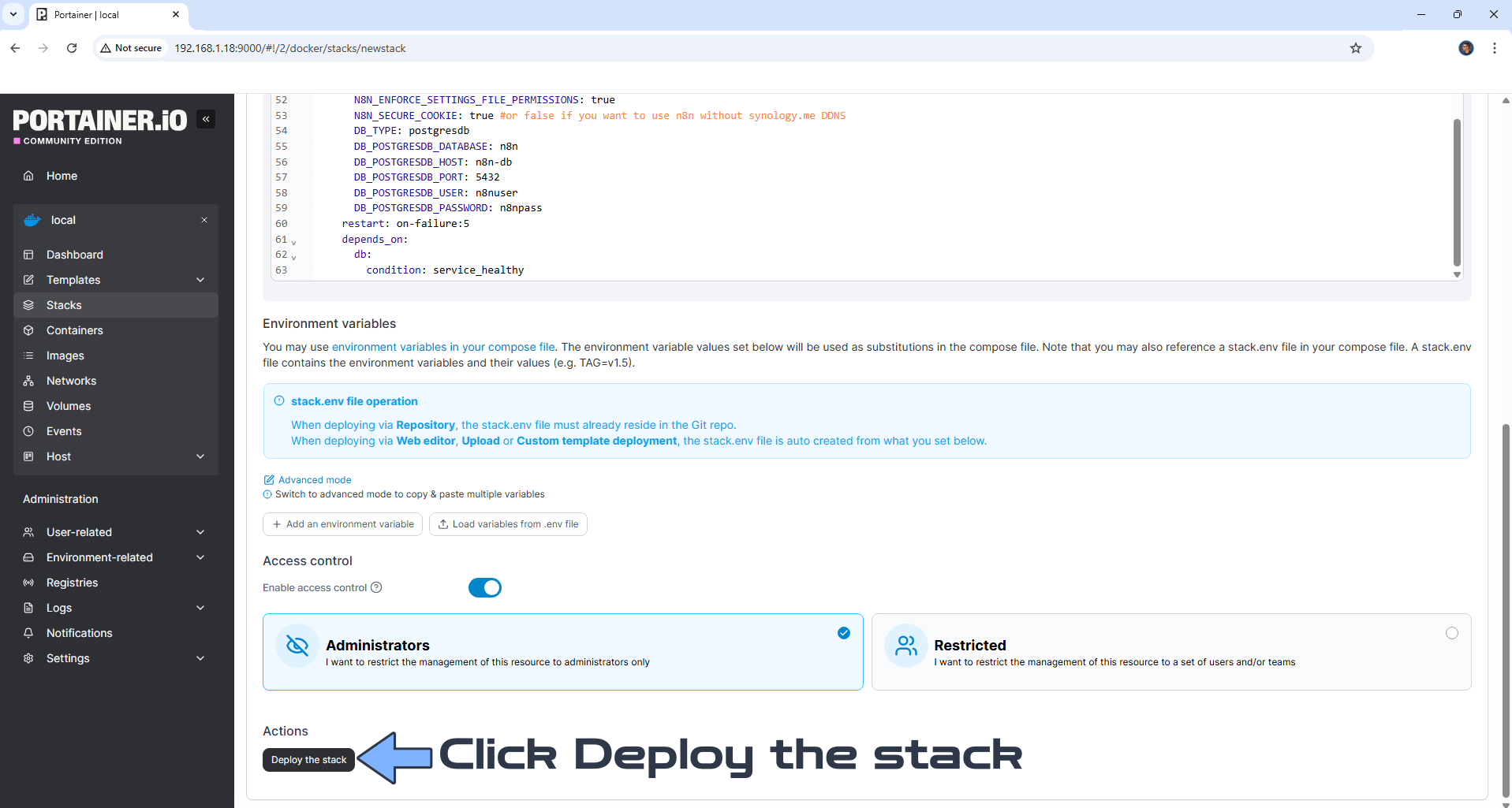
STEP 15
If everything goes right, you will see the following message at the top right of your screen: “Success Stack successfully deployed“.

STEP 16
🟢Please Support My work by Making a Donation. Almost 99,9% of the people that install something using my guides forget to support my work, or just ignore STEP 1. I’ve been very honest about this aspect of my work since the beginning: I don’t run any ADS, I don’t require subscriptions, paid or otherwise, I don’t collect IPs, emails, and I don’t have any referral links from Amazon or other merchants. I also don’t have any POP-UPs or COOKIES. I have repeatedly been told over the years how much I have contributed to the community. It’s something I love doing and have been honest about my passion since the beginning. But I also Need The Community to Support me Back to be able to continue doing this work.
STEP 17
Now open your browser and type in your HTTPS/SSL certificate like this https://n8n.yourname.synology.me In my case it’s https://n8n.mariushosting.synology.me If everything goes right, you will see the n8n Sign in page. Type in your own credentials then click Next. Follow the instructions in the image below.
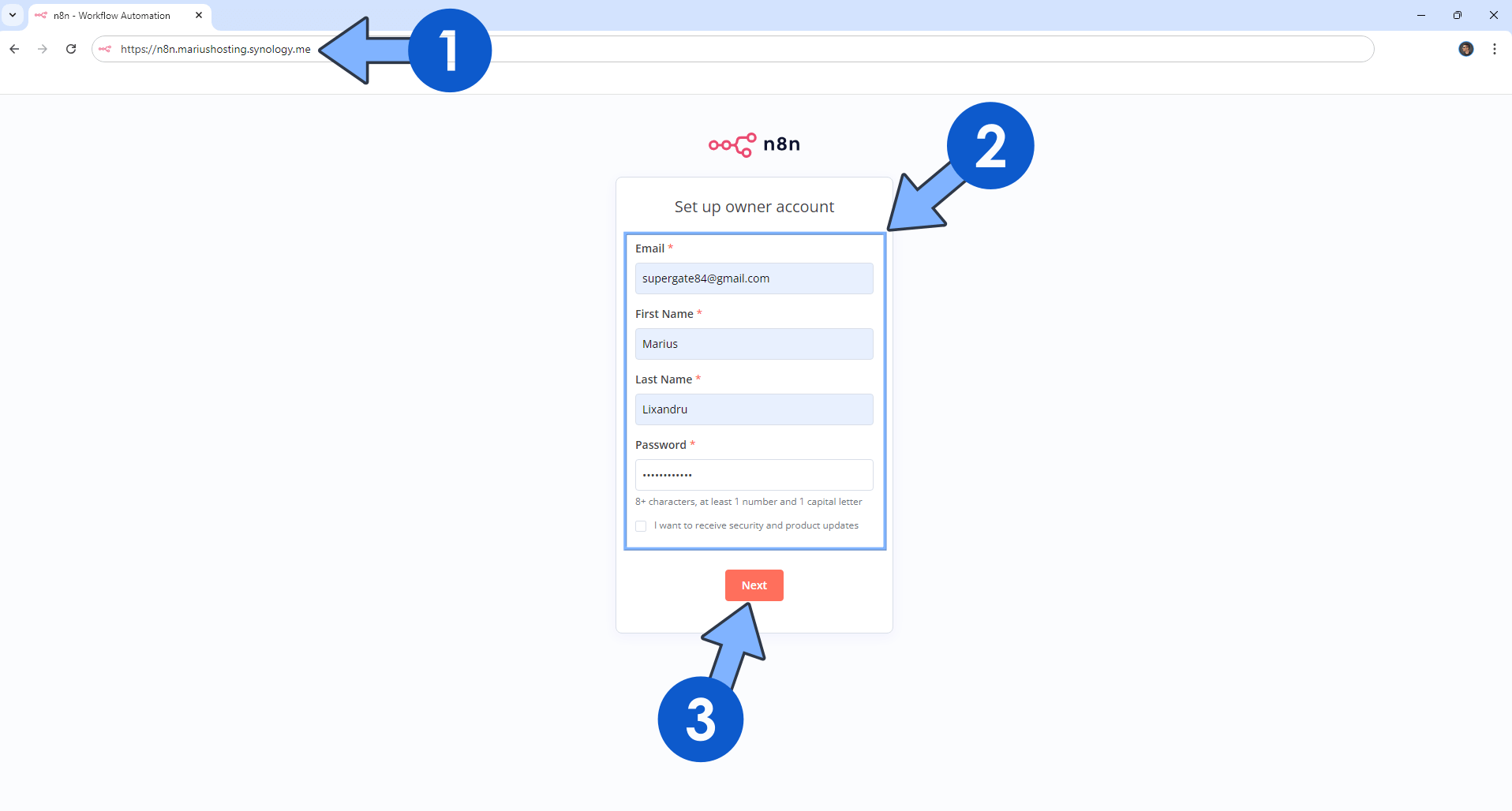
STEP 18
Describe your company, then click Get started. Follow the instructions in the image below.

STEP 19
Type in your own Email, then Click send me a free license key. Follow the instructions in the image below.

STEP 20
Check your Email and save your license in a safe place. You will need this KEY later at STEP 22. Follow the instructions in the image below.
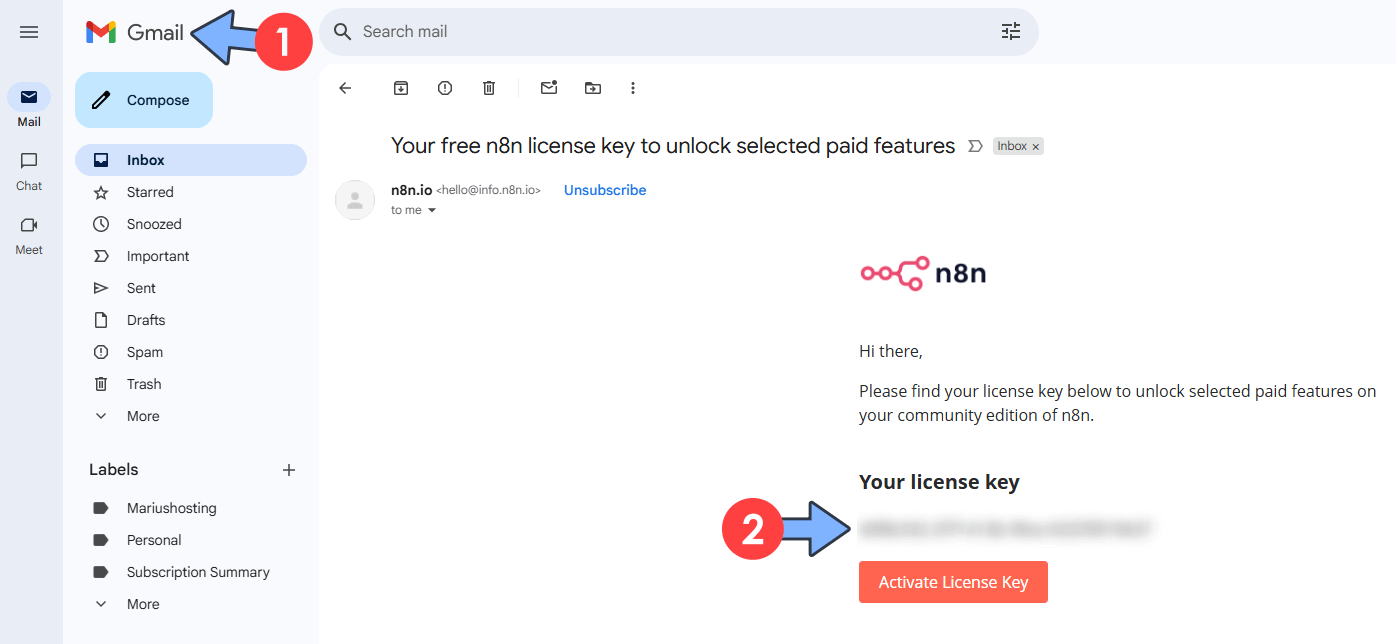
STEP 21
In the lower right corner, click on the 3 horizontal dots then Settings. Follow the instructions in the image below.
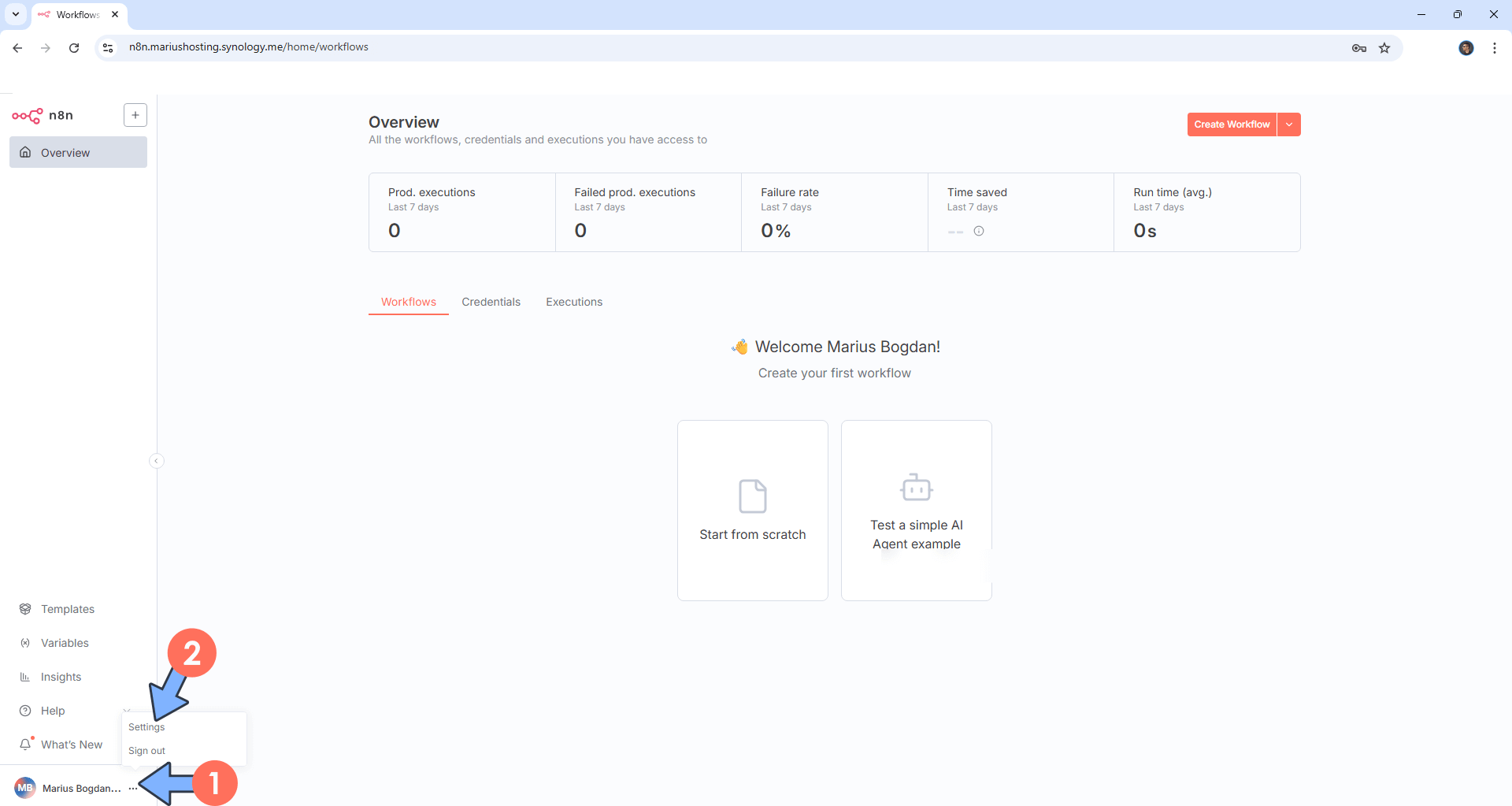
STEP 22
On the left sidebar, click Usage and plan, then click Enter activation Key. Type in the Key that you have previously received via email at STEP 20. Click Activate. Follow the instructions in the image below.
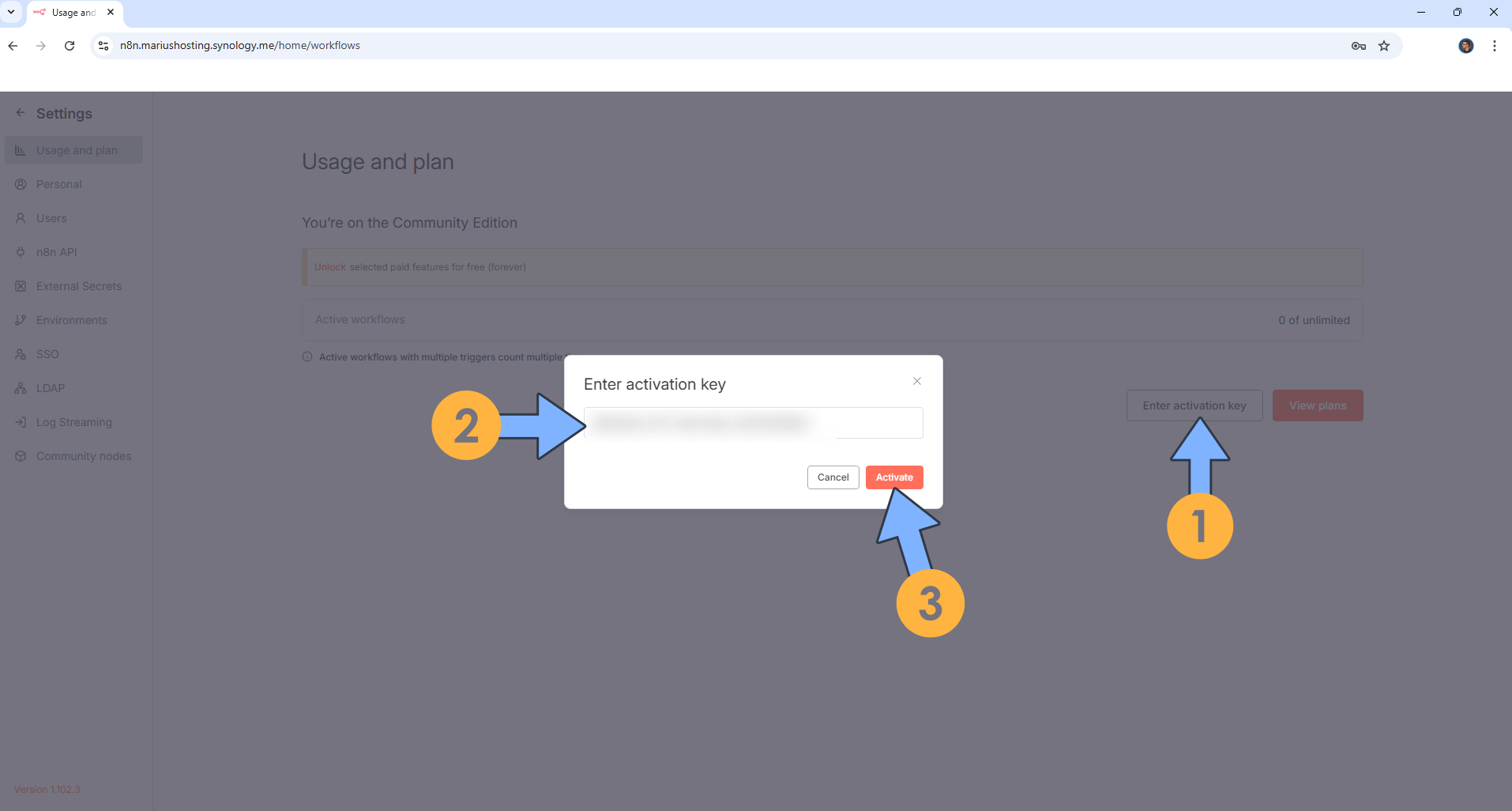
STEP 23
Your License is now activated. Go straight to the next step.
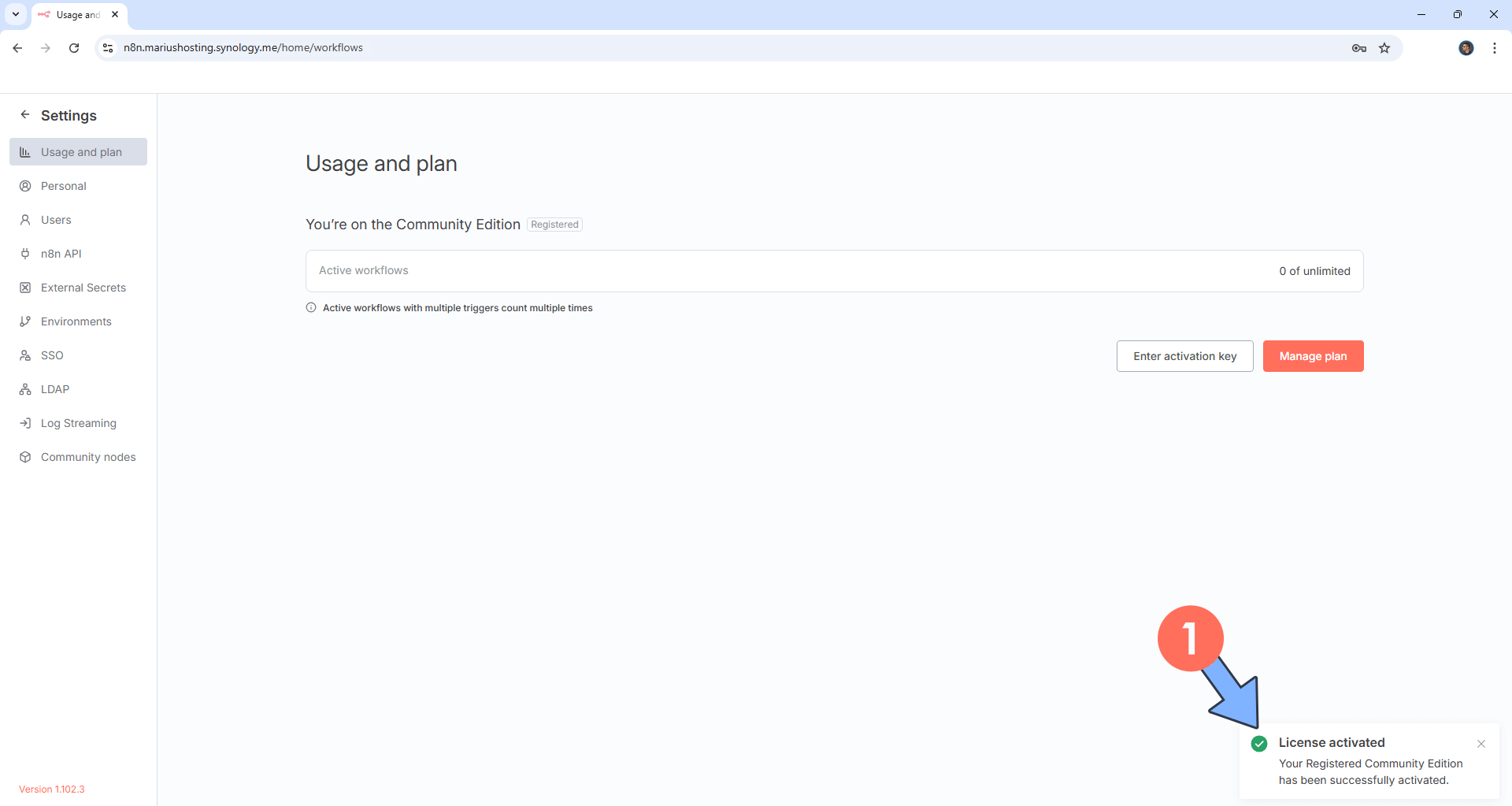
STEP 24
On the left sidebar, click Personal. Switch the theme to Dark. Click Save to save the settings. Follow the instructions in the image below.
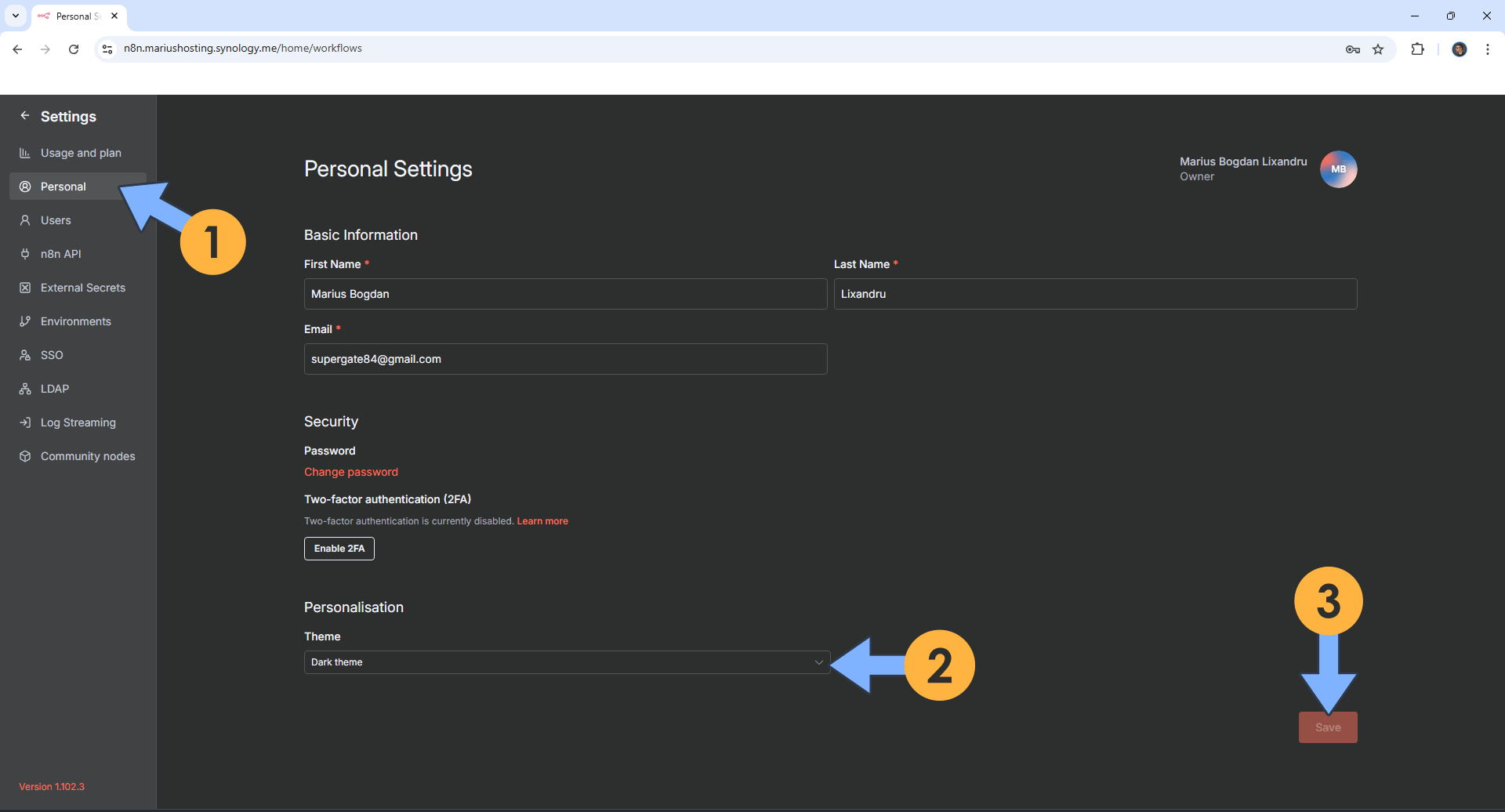
STEP 25
Your n8n dashboard at a glance!

Enjoy n8n!
If you encounter issues by using this container, make sure to check out the Common Docker issues article.
Note: Can I run Docker on my Synology NAS? See the supported models.
Note: How to Back Up Docker Containers on your Synology NAS.
Note: Find out how to update the n8n container with the latest image.
Note: How to Free Disk Space on Your NAS if You Run Docker.
Note: How to Schedule Start & Stop For Docker Containers.
Note: How to Activate Email Notifications.
Note: How to Add Access Control Profile on Your NAS.
Note: How to Change Docker Containers Restart Policy.
Note: How to Use Docker Containers With VPN.
Note: Convert Docker Run Into Docker Compose.
Note: How to Clean Docker.
Note: How to Clean Docker Automatically.
Note: Best Practices When Using Docker and DDNS.
Note: Some Docker Containers Need WebSocket.
Note: Find out the Best NAS Models For Docker.
Note: Activate Gmail SMTP For Docker Containers.
This post was updated on Saturday / December 13th, 2025 at 1:05 AM
